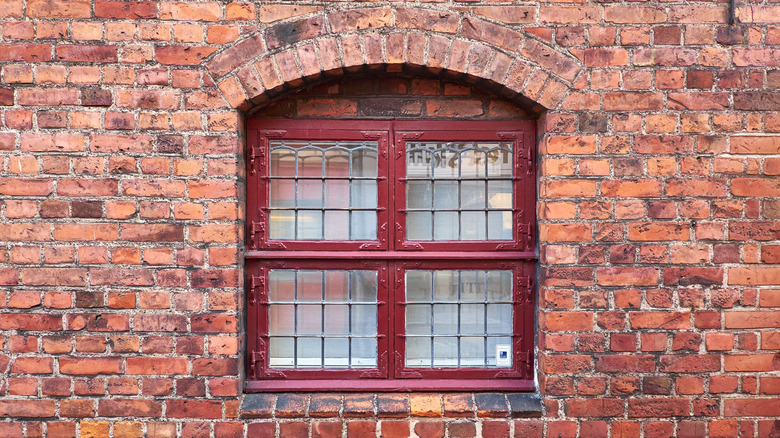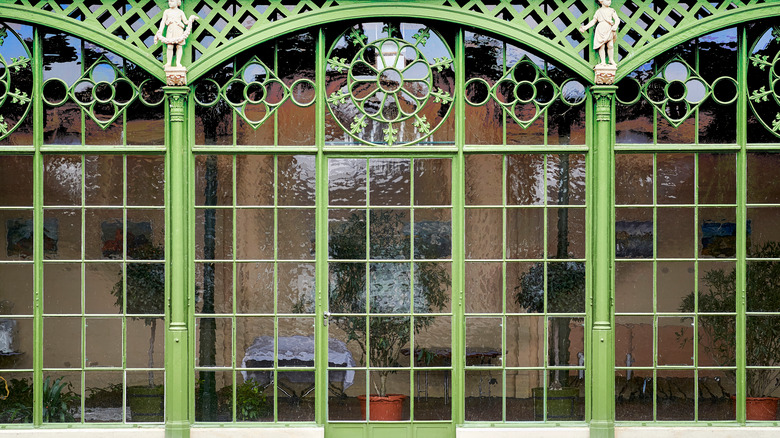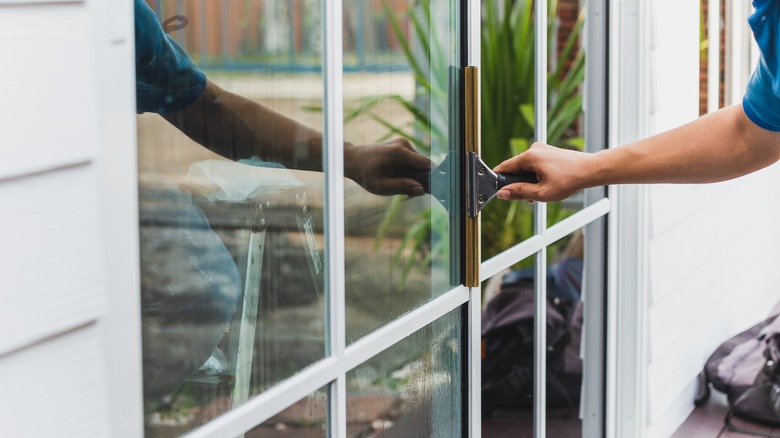Here's The Real Difference Between Window Mullions And Muntins
Muntins and mullions might sound like a bizarre dish your aunt brings to the family reunion, but they're actually a unique feature commonly found on historical homes in New England and Europe. Sometimes modern builds implement these designs to make the home look more regal and unique. If widows are the eyes of a house, then muntins and mullions are like the iris; they're crucial for the structure and support of the glass, but they also add an element of timeless beauty to the window. So what's the difference? In simple terms, muntins are small, vertical pieces separating small panes of glass, while mullions sit between large sections of multiple panes and muntins.
If you think that still sounds a little confusing, wait until you hear about all the other complex terminology that goes into making a beautiful window. It's true that there's a whole world outside of your window, but there's also a whole dictionary within it. Learn more about the fascinating history and modern applications of muntins, mullions, stiles, rails, grilles, and more.
Piecing together the history
Romans were the first people to use glass windows, but it would be a long time before glass became common and affordable in everyday homes. Before the mid-1800s, glass had to be melted, blown, and spun by hand. Because of minor imperfections, early glass windows often had a bumpy, wavy, or foggy appearance. In addition, large sheets of glass were scarce, expensive, and challenging to produce until the 1940s, when "float glass" became the latest technology. To make large windows, people would connect smaller panes of glass, using muntins and mullions to hold them together and stabilize the structure.
Muntins are the thin, vertical pieces connecting small segments of glass. Usually made from metal or wood, muntins also help to distribute the vertical weight of the window so that it doesn't damage the wall below it. This structural support was especially important for massive buildings like cathedrals and royal palaces, as ordinary and stained glass windows could be extremely tall and heavy.
Window mullions also sit vertically on the windows but are heavier and wider than muntins. Mullions may make it look like one large window is comprised of sets of smaller windows. Only the inner vertical pieces are called muntins or mullions; the vertical bars that border the whole window are called stiles, the horizontal borders are called rails, and the top horizontal bar is called the head.
Modern-day muntins and mullions
As glass production roared into the 20th century, muntins and mullions fell out of style, and architects and homebuilders began using more smooth, solid, and mass-produced panes of glass. The pieced-together muntin and mullion windows were viewed as clunky and old-fashioned for much of the 1900s, but many homeowners today prize their historical windows. Muntins and mullions lend a vintage charm, and these old-fashioned windows still have some benefits. For example, a break or crack in one pane of glass can be fixed without replacing the whole window. However, modern glass windows are generally much clearer and more energy-efficient.
All this terminology can make anyone feel dizzy, so buyers and window manufacturers today usually prefer to call all of the inner details "glazing bars" or "grilles." Most modern windows are made with one solid sheet of glass, so the inner grilles are just for decoration. Looking at your windows, you may find vertical and horizontal grilles adhered to one side of the glass or pressed between two solid panes. These visually separate the window into squares but don't do much for the structural support of the window. As such, modern grilles are just a part of traditional building design that many people continue to emulate in their homes today.


